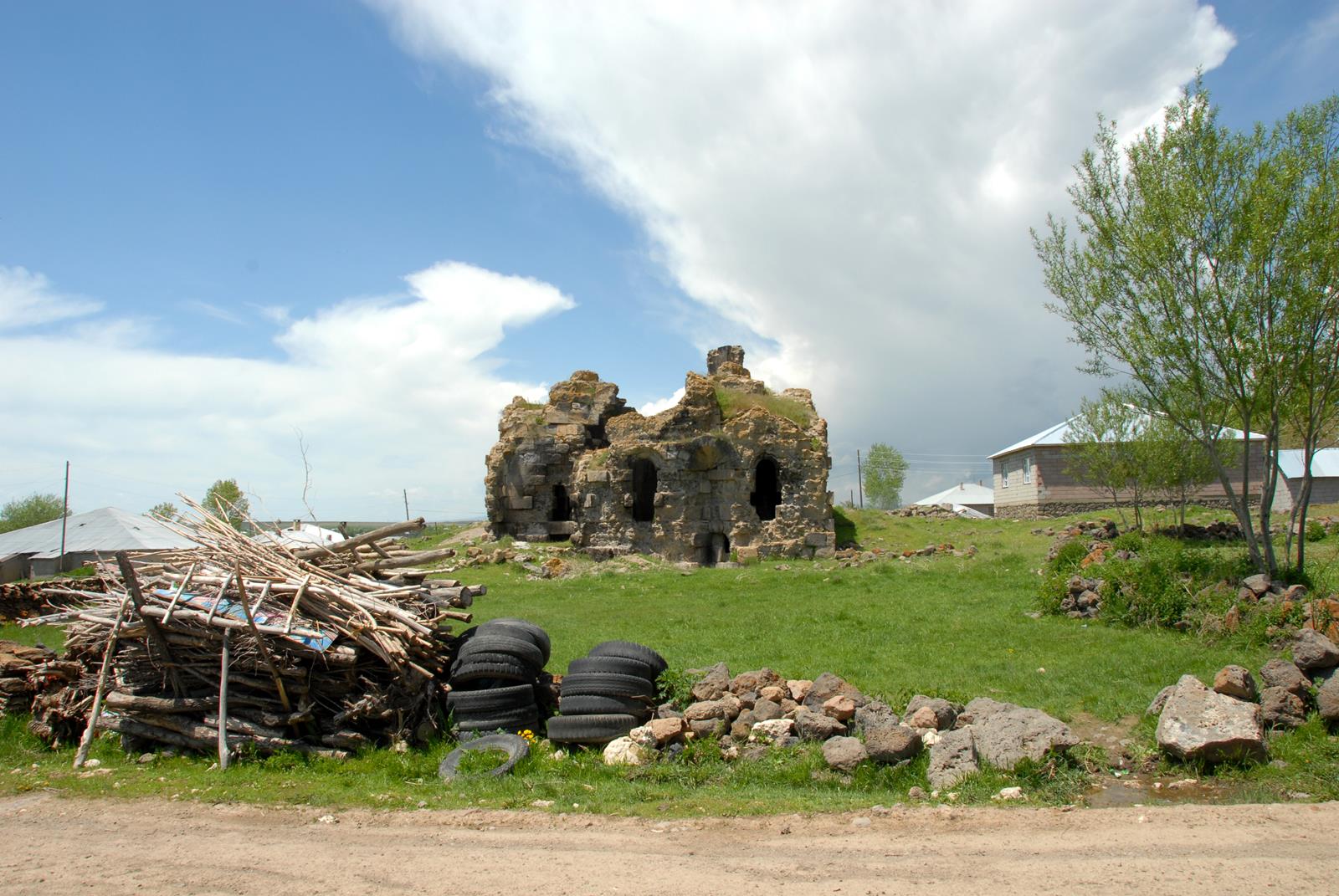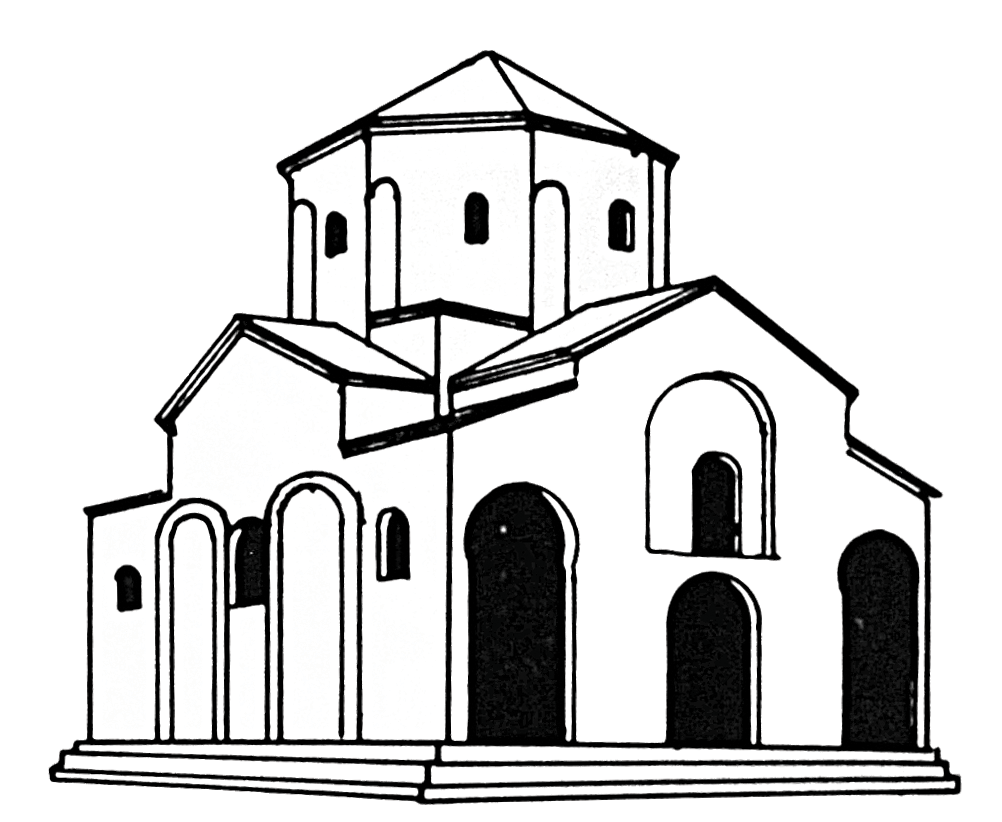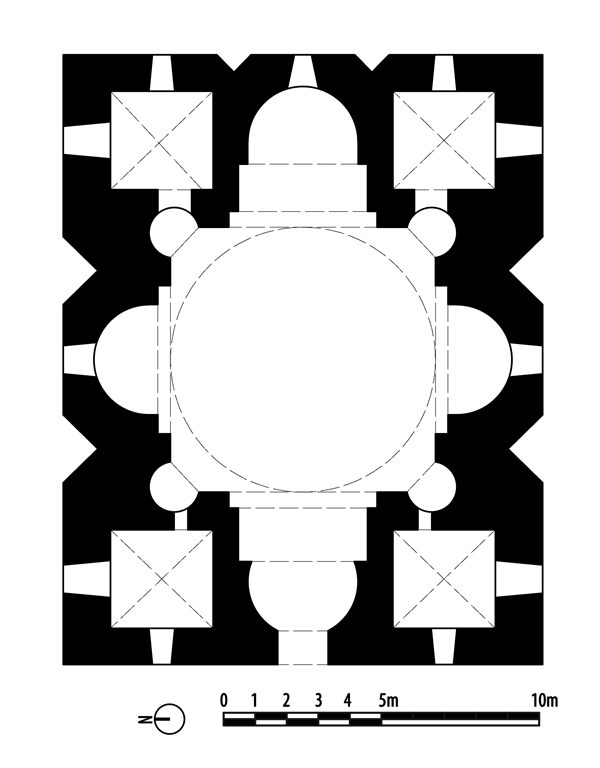This monastery, also called Suhar monastery (Souhara Vank‘), a name claimed by another establishment as well, or Kharapasd monastery (Kharapasdi Vank‘) from the name of an old village, monastery of the Holy Mother of God Ardzwaper, or of “the Eagles”, an epithet that refers to the flight of this bird, no doubt derived its name from the reworking of an Urartian toponym. Situated to the east of Arjesh [Erçiş] and its Agants neighborhood [Erciş, east neighborhood], between the villages of Sosgun [Keklikova] to the north and Gdradz K‘ar [Kadirasker Köyü] to the south, it stands at the foot of the southern branch of the Dzaghgants Mountains, at 39°02´N and 43°26´E. The hamlet surrounding the monastery is known simply as Ardzwaper [Salmanağa].There is yet another monastery of the Holy Mother of God Ardzwaper, which stands in the Rëchdunik‘, on the south shore of Lake Van.

Vue générale l'église de la Sainte-Mère de Dieu, 2011 (Coll. P. Maguesyan).
Foundation of the monastery is attributed to Prince Mjej Knouni, a figure from the first half of the 7th century († 637), or less probably to Catholicos Elijah I of Ardesh (Eghia Ardjichetsi, 703-717). Cited in the 13th century as one of the three important monasteries in the canton of K‘adchperunik‘, together with those of Medzop‘ (n° 9) and Urngar, Ardzwaper appears in the 14th-15th centuries as a major scriptorium. The bishops Lazarus (Ghazar, 1325), Khachadur and Zak‘eos († before 1401) feature among the great abbots of this community. The latter attracted the Doctor Sergius of Sorp (Sarkis Sorpetsi, † 1401, see n° 15, 28) to the monastery in 1393, where he founded a university attended by some sixty students. After his death, his teaching was carried on by Doctor Vartan from the convent of the Spirits (Hokwots Vank‘, n° 31), then by the scholar Gregory Dzerents of Khlat‘ [Ahlat] (Krikor Dzerents Khlat‘esti), the famous compiler of the Lives of the Saints, who ultimately moved his school to another spiritual center in Vasbouragan, Tsibnavank‘, near Ardzgué [Adilcevaz], where the seat of the diocese of K‘adchperunik‘ was also moved. Ardzwaper was restored in 1409-1414, at the time of Abbot Garabed. When it was decided in 1441 to move the seat of the Armenian Church from Sis [Kozan] in Cilicia (see n° 73) to the monastery of Edchmiadzin in Vagharshabad and to install a new catholicos, Guiragos I, a student of the Ardzwaper school previously ordained by the abbot, Zak‘eos, was the choice. The continued activity of the Ardzwaper scriptorium is attested until the end of the 16th century, after which it suddenly declined.In 1711, the priest Garabed of Mogs undertook restorations in a monastery he had discovered deserted and he redeemed a cross and some manuscripts that had been left as a pledge, but it is more likely that was the convent of the same name in Rëchdunik‘.Most of the texts describe this monastery, and its church in particular, as imposing and magnificent structures. In the second half of the 19th century, part of the church dome collapsed and it could not be rebuilt: on the contrary, the monastery was attacked and laid waste in 1896 and again in 1915.

Axonometric restitution and plan (Thierry, 1989, 202)
The Ardzwaper monastery is organized around the church of the Holy Mother of God, a tetraniche tetraconch with chambers in the four corners, two of which in the west façade open onto the outside; the church was patterned on the church of Saint Hrip‘simé in Vagarshabad (Edchmiadzin), built in the early 7th century. Measuring 15.2 × 18.5 m, it is erected on steps, and was coiffed by an octagonal drum topped by a pyramid; the corners of the drum were underscored by vertical niches, like those on some Armenian monuments of the same period. The church had a high altar in the east conch, and two side altars, dedicated respectively to Saint Stephen and to Saint Sergius, next to two ancient tombs, perhaps those of Sergius of Sorp, the abbot Zak‘eos or the abbot Khachadur, who were buried side by side. Ardswaper also had a sturdy courtyard wall with four corner towers, two impressive dwellings, storerooms, cellars and grain silos. Not far away stood two cross-stones bearing the dates 1402 and 1404, the latter raised by Abbot Garabed in memory of the great abbot Zak‘eos, his kinsman. A third stone was dated 1449.

Plan (Thierry, 1989, 202)
Ardzwaper was confiscated after the Great War and left unprotected. All of the outbuildings have disappeared, including the wall and the cross-stones. The church no longer has its drum and has lost much of its external covering, the slabs having been pulled off. The multicolored slabs covering the inside walls are still in place where the walls have not collapsed. The semicircular triumphal arch of the apse, which was almost intact in the 1970s, now has a breach.

Façade extérieure sud, inscription, 2007 (Coll. privée).
Oskian, 1940-1947, II [1942], 396-412. Thierry, 1989, 199-205. Donabédian, 2008, 166-167.